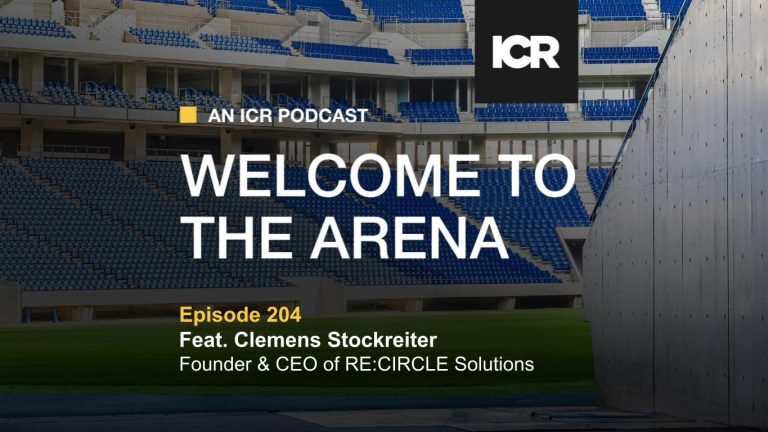In the past several years, the healthcare landscape has altered dramatically as consolidation has continued across the healthcare verticals, but the scale of the entities involved now is truly gargantuan as the natural limits within sectors have been reached and this has led to vertical and cross vertical integrations with the pending CVS-Aetna and CIGNA-Express Scripts transactions being prime examples. Another key dynamic is the recent entrance of Amazon into the healthcare ecosystem. Commentary on Amazon’s entrance has run from, ‘they will revolutionize the delivery of care as they have revolutionized so many other industries’ to the more mundane view that ‘yet another tech company is about to get humbled by the quagmire of healthcare in America.’
Our view at ICR runs between these two extremes. We view the healthcare system in the U.S. at an important juncture that will transform care delivery and access, but as with all revolutions, it will take time for the transformation to be more evident and live up to its potential. In fact, the basic building blocks for this transformation are either already being put into place, or are well in the process of being developed and implemented. Electronic medical records…check, bio-sensory devices to record an ever expanding level of human physiological data…check…AI-derived care monitoring and delivery protocols…check…personalized medicine with genomic and immunotherapies…double check. The list of technological innovations goes on.
Mandated government payment reforms however, tend to be enacted slowly and implemented measuredly. Here we must recognize that there are always exceptions to these general conditions and meaningful progress has been made in the Medicare Advantage and the managed Medicaid markets driven by private-sector innovations. Payment reforms have been the bottleneck in the evolution of healthcare in the United States since 1965. Yet, we see the private sector reaching a critical cost juncture in the commercial market. We note a recent conversation with a health plan executive that noted one of his biggest customers indicated that before long the cost of providing health insurance for its employees would soon surpass the wages paid to employees. It is the cost of private healthcare, which subsidizes public care delivery that will force change across the healthcare industry and the reason why we expect significant structural changes ahead, regardless of the success or failure of Amazon in its endeavors.
It is this dynamic, along with the constant stream of innovations healthcare entrepreneurs grind out on a continual basis that we believe will revolutionize healthcare delivery in America. We see digital capabilities supplanting asset-based care delivery models as the technological innovations accelerate to allow remote monitoring of an ever increasing list of conditions which will climb the acuity spectrum. At ICR, we work with these courageous leaders on a daily basis as they build their companies that will fit into this mosaic of care transformation. For young companies to navigate this changing landscape, it is imperative to:
- Have a vision of what the healthcare landscape will look like ten years from now and how you fit into this world or help create it
- Have a partner that understands this vision and can craft an integrated communications strategy to customers, partners, the healthcare ecosystem, investors, and has trusted relationships with the investment community across private and public equity firms
- Build a team with the requisite experience and skillsets to meet the company’s long-term vision with diverse experiences across the healthcare ecosystem, technology, and consumer sectors
- Begin building a board with similarly diverse backgrounds across these same sectors
- Design flexibility into the model to account for unknowns
Before we go, an observation about the Amazon, Berkshire, and JPM joint venture. One of the known facts about the joint venture is that it will be “free from profit-making incentives and constraints.” Over 80% of healthcare delivery in the U.S. is provided by “non-profit” or “not-for-profit” institutions and that has largely done little to arrest the exponential growth rates in the cost of care. However, another factor that has impacted the cost of care in the United States is one of consolidation and this applies across healthcare verticals and provides a lesson for those would be rebel pilots wanting to take down the Death Star. An eco-system of potential Unicorn companies with ownership structures that protect from much larger competitors acquiring at high near-term multiples though low long-term valuations to subsequently reduce competition and raise prices would be a welcome development. It is the consolidation dynamic in the sector that is most likely a major factor in Amazon’s decision to structure the venture as a non-profit.
Potential disruptors need to shield themselves from the pervasive short-term investor mentalities that forsake more significant, though much longer-term disruptive opportunities. This can be achieved via multiple share classes with graduated voting rights.
Another option is to include in the certificate of incorporation the authorization of the issuance of blank check preferred stock. Blank check preferred stock among other things allows for the issuance of up to a certain amount of preferred stock to fix and designate the rights, preferences, privileges and restrictions of the preferred stock, including voting rights and terms of redemption and liquidation preferences.
An even more subtle alternative to assist founders resist near-term temptations is to include multiple board members with past experiences of having sold their companies too early. In building a board, we suggest developing relationships with potential board members to get to know these individuals personally well before offering a board seat.
Arming the next generation of healthcare enterprises with a protective ownership structure should allow one or more to break through the defenses of the healthcare industry to deliver the much needed disruptive change required and allow founders to maximize the long-term value of their businesses. Ultimately protecting founders’ abilities to maximize the long-term value of their business will create extra hurdles in the public markets, if the company goes public. However, those hurdles can be successfully navigated when working with partners experienced in these matters.



